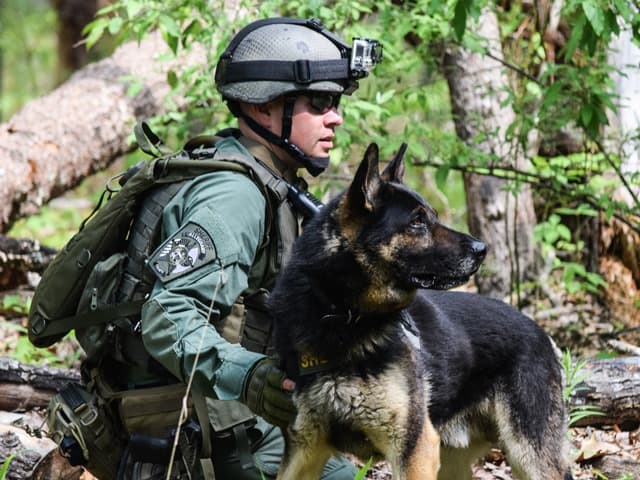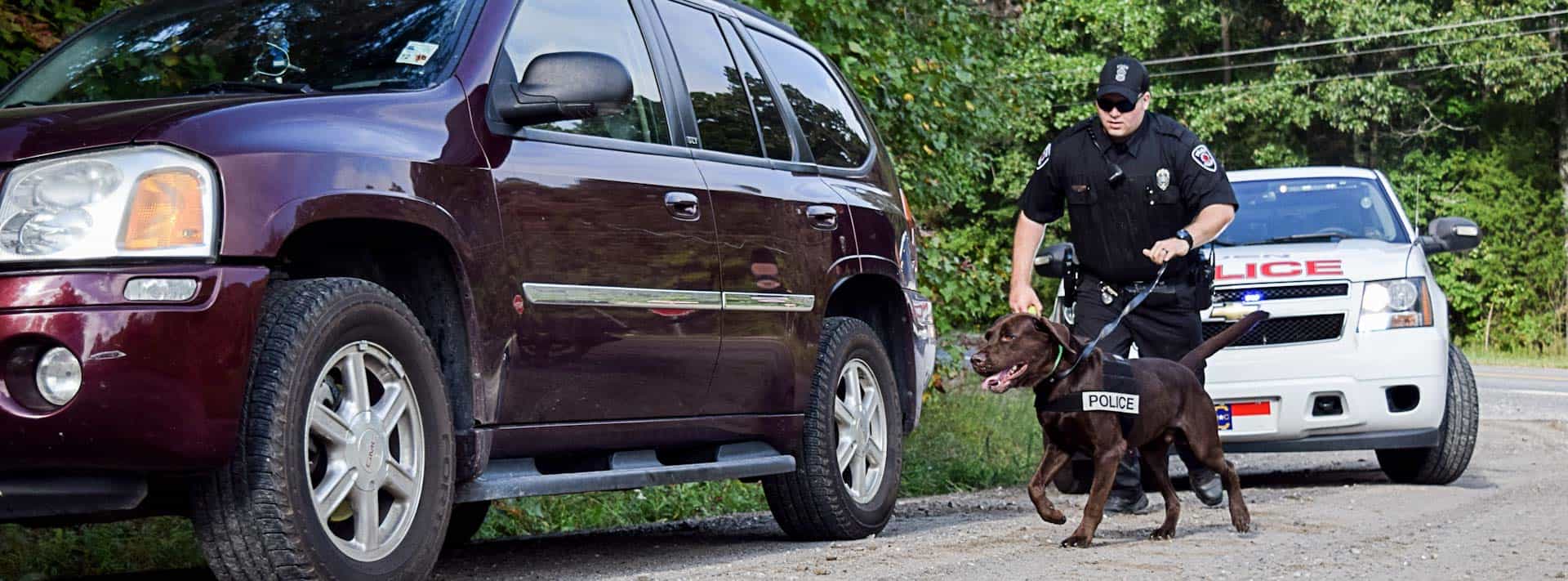At Highland Canine, we offer an extensive curriculum which trains police dogs and their K9 handlers – but our mission isn’t confined to those who attend our courses. We want to help the general public achieve a better understanding of police dogs, their roles in modern-day law enforcement, and how these incredible canines help police officers every single day.
With the growth of the Internet and social media channels, the potential for misinformation or outright falsehoods to enter the public domain has increased. To combat this, we have put together a list of common questions and answers to provide you with accurate information you can trust!
What do police dogs do?
Police dogs assist law enforcement officers in a number of ways. They can be used to sniff out drugs, detect explosive devices, confront and apprehend suspects, and help in search and rescue missions.
Which breeds make the best police dogs?
Typically, a police dog will be one of the following breeds:
- German Shepherd
- Belgian Malinois
- Bloodhound
- Labrador Retrievers
What traits make a good police dog?
Depending on their role, a police dog will need different personality traits and skills – for example, a search and rescue dog will have different characteristics to those of a patrol dog. However, all police dogs require a sound temperament and good trainability to specialize in their niche.
What can police detection dogs smell?
Detection dogs can sniff virtually anything they are trained for. Whether they’re taught to smell drugs, explosives, or even a human scent, the key is in the training method.
How are police dogs trained?
After becoming experts at obedience training and tested for sociability, police dogs must then pass extensive agility and endurance tests, and finally receive specialist training for their field of work. At Highland Canine, we have created a safe and effective program which covers these aspects in full.

When were police dogs first used?
Some stories indicate dogs have been used in law enforcement since the Middle Ages, but but Belgium introduced the first organized police dog program in 1899. In the United States, police dogs were first introduced in New York City in January 1908.
How many police dogs are there in the United States?
No official figures exist, but Jim Watson, secretary of the North American Police Work Dog Association, gave a “wild guess” of in excess of 50,000 in 2010.
How long does it take to train a police dog?
Whilst it varies from location to location, at Highland Canine, our program takes us 16 weeks to train a police dog (with an additional four weeks to train the handler).
Where do police dogs live and where do they sleep?
This depends on several factors – the dog, the handler and local regulations. Some police dogs stay in their handler’s house, whilst others are not able to due to departmental restrictions.
Are police dogs neutered or spayed?
The majority of police dogs are not neutered, although some females are spayed because of their heat cycles.

Are all police dogs trained to understand German?
No. Police dogs can be trained in their native languages – and a large proportion of them originally hail from European countries, including Germany. However, it is usually up to the individual handler to determine if the dog should be taught commands in English or their native language.
When do police dogs retire?
Police dogs will typically be retired from service when they are seven or eight years of age. The dogs will typically live about 11 to 14 years on average, and are often adopted by their handlers when their service finishes.
In summary
Do you have any questions about police dogs that weren’t covered in this article? Feel free to leave a comment on our Facebook page, and we may add your question – and the answer – to this article!


You must be logged in to post a comment.